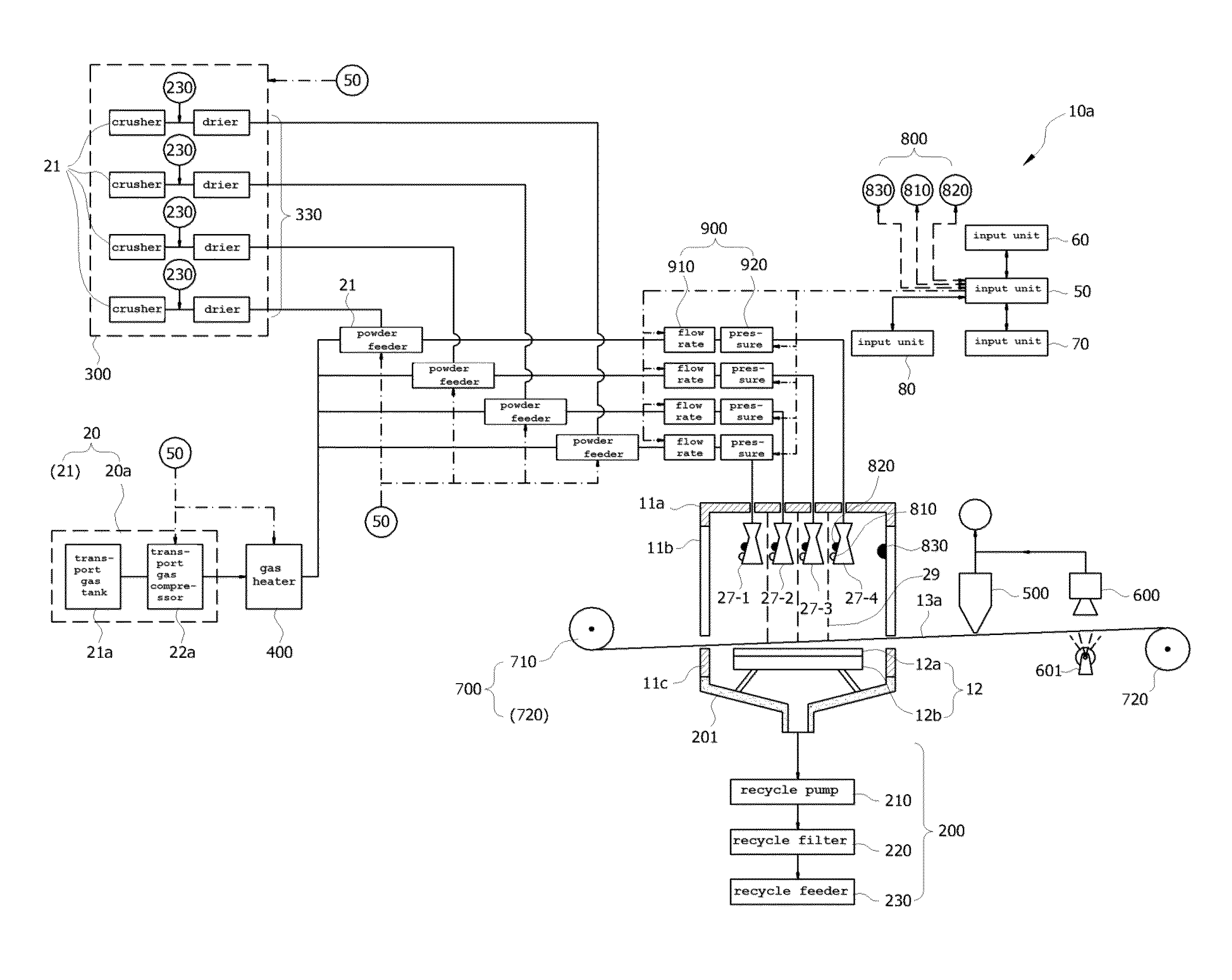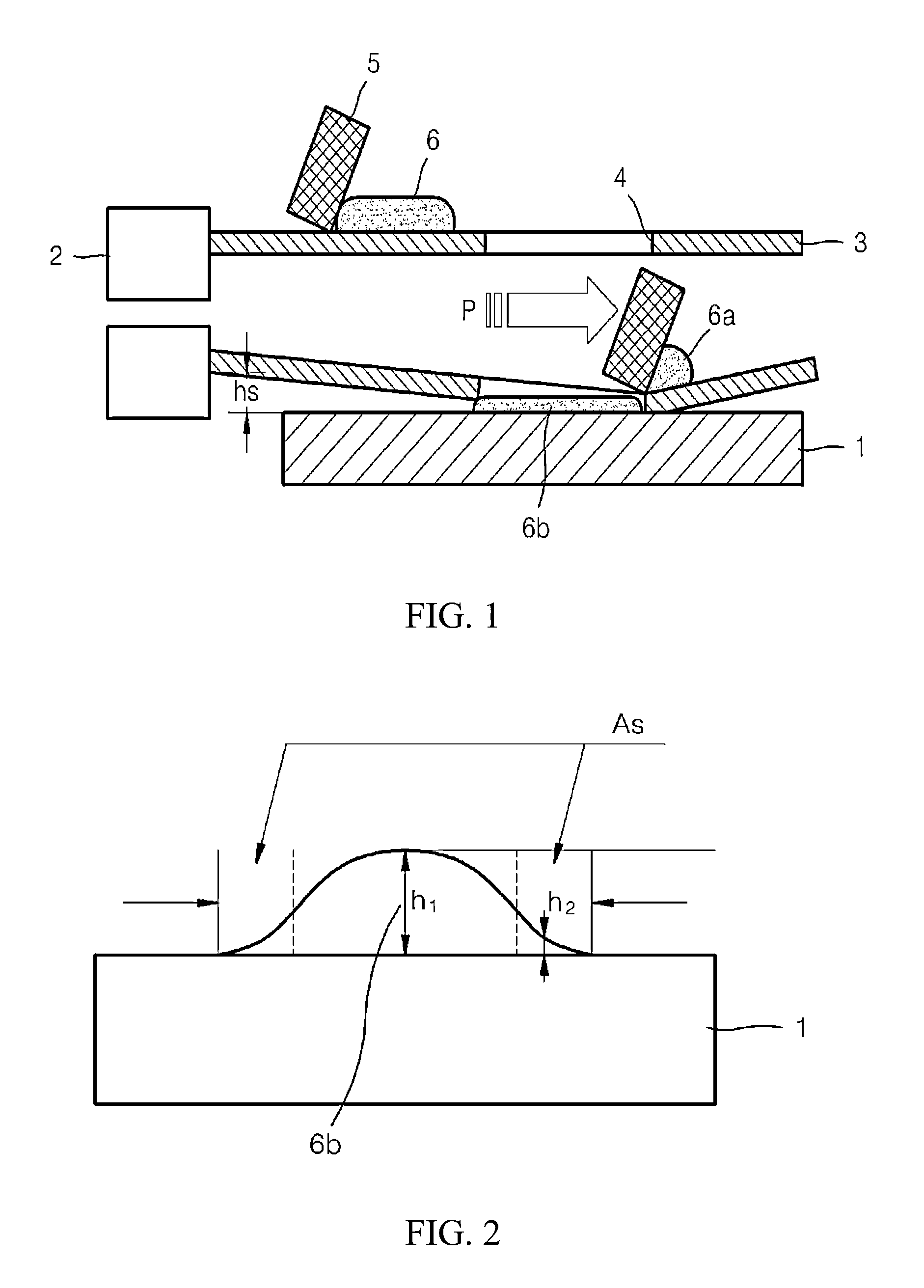Apparatus for manufacturing an inorganic thin-film solar cell, and method for controlling same
a technology of solar cells and inorganic thin films, which is applied in the direction of sustainable manufacturing/processing, final product manufacturing, coatings, etc., can solve the problems of limited high cost and time-consuming process of solar cell layer formation, etc., to reduce material cost, improve solar cell efficiency, and reduce manufacturing cost
- Summary
- Abstract
- Description
- Claims
- Application Information
AI Technical Summary
Benefits of technology
Problems solved by technology
Method used
Image
Examples
Embodiment Construction
[0053]Now, preferred embodiments of an apparatus for manufacturing an inorganic thin-film solar cell and a method for controlling the same according to the present invention will be described hereinafter in detail with reference to the accompanying drawings.
[0054]FIG. 3 is a schematic state view illustrating an apparatus for manufacturing an inorganic thin-film solar cell according to an embodiment of the present invention, FIG. 4 is a state view illustrating an example of a multi-nozzle of an apparatus for manufacturing an inorganic thin-film solar cell according to an embodiment of the present invention, FIG. 5 is a state view illustrating another example of a multi-nozzle of an apparatus for manufacturing an inorganic thin-film solar cell according to an embodiment of the present invention, and FIG. 6 is a state view illustrating still another example of a multi-nozzle of an apparatus for manufacturing an inorganic thin-film solar cell according to an embodiment of the present in...
PUM
| Property | Measurement | Unit |
|---|---|---|
| thickness | aaaaa | aaaaa |
| pressure | aaaaa | aaaaa |
| flow rate | aaaaa | aaaaa |
Abstract
Description
Claims
Application Information
 Login to View More
Login to View More - R&D Engineer
- R&D Manager
- IP Professional
- Industry Leading Data Capabilities
- Powerful AI technology
- Patent DNA Extraction
Browse by: Latest US Patents, China's latest patents, Technical Efficacy Thesaurus, Application Domain, Technology Topic, Popular Technical Reports.
© 2024 PatSnap. All rights reserved.Legal|Privacy policy|Modern Slavery Act Transparency Statement|Sitemap|About US| Contact US: help@patsnap.com










